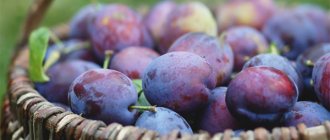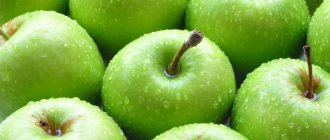Dill seeds for the pancreas are used in the form of infusions, decoctions and powdered substances. Often in folk recipes they are combined with other medicinal plants, which makes it possible to obtain a herbal collection with an effect that improves digestion. Medicines made from dill seeds have side effects and contraindications, so they should be taken for the treatment of diseases of the pancreas and other organs of the digestive system only after consulting a doctor.
How does dill affect the body during pancreatitis?
Using dill as a folk medicine for pancreatitis, you can prevent exacerbation of the disease and prevent the inflammatory process in the pancreas from becoming chronic. Dill grains, alone or as part of a medicinal herbal collection, if taken correctly, improve the functioning of the gastrointestinal tract.
Homemade medicine works by:
- Antispasmodic. Dill decoctions and infusions help eliminate spasms of the smooth muscles of the digestive tract during pancreatitis. They remove the feeling of overeating, improve the digestive process, and relieve pain.
- Choleretic. Dill grains contain components that cause a choleretic effect. They provoke the timely outflow of bile and regulate the activity of the biliary system (gallbladder and bile ducts).
- Carminative and laxative. Dill liquid prevents gas formation. The substances contained in the grains increase intestinal motility and eliminate constipation.
- Natural antibiotic. Regular intake of dill decoctions or infusions eliminates the formation of putrefactive processes in the large and small intestines.
- Enzyme preparation. Daily intake of dill water improves appetite and normalizes digestion.
- A medicine that increases stomach acidity. Dill seeds activate the work of the gastric glands.
- Sedative. Pancreatitis often causes nervous disorders and stress, and dill water has a beneficial effect on the human nervous system and helps improve sleep.
- Anti-inflammatory agent. Decoctions of dill seeds relieve inflammation from the gastrointestinal mucosa and promote its rapid healing.
With pancreatitis, patients experience surges in blood pressure. Since the medicine made from dill grains helps to reduce it, you should not take this medicine if you have hypotension.
Be careful
There are some limitations that we encounter when studying medicinal properties and contraindications. Dill seeds dilate blood vessels and can slightly reduce blood pressure. If the patient already has hypotension, this can lead to a deterioration in well-being.
It is not recommended to use dill in the acute phase, with severe inflammation of the gland. During this period, you will be required to follow a strict diet and follow all doctor's instructions. Self-medication can only do harm; do not neglect the recommendations of a specialist. Moreover, during this period you need to completely exclude fresh greens from your diet, even as a seasoning. The mucous membrane needs to be provided with maximum peace and care.
It is not advisable to take dill decoction during pregnancy. Typically, women experience low blood pressure, and dill infusion can further aggravate this. As a result, the condition will only get worse. In very rare cases, this treatment can cause premature birth.
- Types of bread that can be eaten with different forms of pancreatitis. What kind of bread can you eat with pancreatitis: recommendations from experts. Diet for pancreatitis
- Herbal mixture for pancreatitis, what herbs to use. What are the benefits of herbal tea?
- Nausea with pancreatitis of the pancreas
- Medicines for pancreatitis of the pancreas: names, reviews
How to and how not to use dill seeds
Dill water improves the functioning of the digestive canal during pancreatitis, but you need to know that not all patients benefit from taking it. This is especially true for people who use medicine according to the principle “the more, the better”, but it is contraindicated for them.
When purchasing seeds at a pharmacy, you should study the instructions on the package. It’s even better to visit your doctor about this, who will create an individual treatment regimen for the drug and indicate the dose.
In the acute stage of pancreatitis
Doctors do not recommend using dill as a medicine for acute pancreatitis because the drug has a strong choleretic and carminative effect. In case of acute inflammation of pancreatitis, there is no benefit to the body from taking dill water. On the contrary, this medicine worsens the condition of an already diseased organ:
- The choleretic property of dill leads to the formation of excess bile, which causes inflammation of some organs of the digestive system.
- The fiber contained in the grains of the plant contributes to diarrhea, which dehydrates and weakens the body. And this is dangerous in case of exacerbation of pancreatic pathology.
For chronic pancreatitis
Greens and dill seeds for pancreatitis in stable remission give good results. They help treat chronic inflammation by improving the microflora of the colon, relieve spasmodic pain, and improve the functioning of the gallbladder. These factors provide rest to the pancreas.
What are the benefits of dill seeds for the pancreas?
The pancreas is a source of enzymes for digesting proteins, fats and carbohydrates, and produces insulin. Dill seeds for the pancreas contribute to the full functioning of the organ.
As a result of their use:
- Intensive metabolism and active digestion of food occurs in the stomach and intestines. This reduces the load on the pancreas when consuming fatty, fried, smoked, salty and spicy foods;
- Gases during flatulence are removed;
- Toxic substances and waste formations, which can cause inflammatory processes, are removed from the body;
- Thanks to the choleretic effect, the liver is cleansed, including from fat accumulations. The healthy functioning of the pancreas depends on its proper functioning;
- Parasites and their larvae are destroyed, as a result of whose vital activity the intestinal microflora is disrupted and can cause diseases of the digestive system;
- Intestinal peristalsis improves, and processed food is not retained in the body.
Note: for proper functioning of the pancreas, it is not recommended to eat after 18-19 hours. As a result of consuming products after the specified time, a biological malfunction occurs in its functioning; with systematic disturbances, this can lead to improper metabolism and cause pancreatitis.
Basic recipes for using dill seeds
Recipes for preparing medicinal powder, infusion and decoction only involve the use of seeds. The whole plant is rarely used and only in herbal collections.
Infusion
Ingredients:
- Dill fruits - 1 tbsp.
- Cool boiling water - 1 cup.
How to prepare: use a mini mill to grind the seeds, pour a glass of boiling water over them. It is better to steam dill powder in a thermos. After 1 hour, the composition must be filtered.
How to use: take the medicine every morning on an empty stomach, 1/4 cup half an hour before meals.
Decoction
Ingredients:
- Dill fruits - 1 tsp.
- Boiling water - 1 glass.
How to prepare: to prepare a decoction, the fruits of the plant are crushed and steamed with boiling water in an enamel pan. Place the container on low heat and simmer for 10 minutes. After cooling, the broth is filtered.
How to use: the remedy should be taken 3-4 times a day, 1/4 cup half an hour before meals.
Powder
To obtain powder from dill fruits, they need to be crushed using a mini mill. Since it is difficult to use dill seeds in the form of dry powder internally, in order to treat chronic pancreatitis, it is recommended to fill the bulk substance with natural honey. Then take 3 times a day, 1 tsp.
Honey enhances the effect of the substances contained in dill powder, but you must remember that this beekeeping product can cause allergies.
Phytocollection
A special place among dill treatment methods is occupied by recipes in which, in addition to the seeds of the garden plant, medicinal herbs, flax seeds and hawthorn berries are used. Here are some effective recipes for such herbal preparations:
Mix the same amount of flax and dill grains, pharmaceutical violet, field dandelion roots and St. John's wort herb with two parts of celandine. Then pour 1 tablespoon of the mixture into 250 ml of boiling water, simmer over low heat, and strain. After cooling, drink in 1 serving. Carry out the procedure 3-4 times a day. Pour 1 tbsp into a two-liter thermos. dry chamomile herbs, hawthorn berries, sandy cumin, peppermint and dill fruits, pour boiling water over the herbal mixture, let it brew for 12 hours, then strain. Take 1 hour after meals 3 times a day.
Mix 3 tbsp in a dry glass container. dry nettle and dill grains, add 1 tbsp to them. calamus root and valerian, yarrow herb. Pour 1 tbsp. herbal mixture 250 ml boiling water, simmer over low heat for 10 minutes. After cooling, strain the mixture. Take the medicine in one dose, 1 hour after eating. Carry out the procedure 3-4 times a day.
Reviews
Treatment with dill seeds in practice often gives a quick effect. This is confirmed by patient reviews.
Alena Sergeeva, 62 years old: “I very often suffer from pain due to inflammation of the pancreas. Last summer there was a lot of dill in the garden, but I didn’t cut all of it. Rosettes with seeds have grown. I collected it and remembered about the bag during the next attack. I brewed it and the pain went away! What a relief! Now I’m friends with dill.”
Elena Ruzma, 34 years old: “I grind dill seeds in a coffee grinder. I use the powder as a choleretic agent.”
Alexey Grig, 58 years old: “I couldn’t go to the toilet due to pain in my pancreas. The doctors didn’t help, the pain was severe, the horror was complete. There were dill seeds on the table. I remembered reading somewhere about their benefits. I ground it in a coffee grinder and poured boiling water over it. I waited until it cooled down a bit and drank it. It does not hurt anymore. In the evening I brewed it again and drank it. This morning I successfully went to the toilet. And there was no pain in the side.”
Sergey Afanasyev, 49 years old: “For many years I have been treating spring allergies with dill decoction. I don’t know exactly which herbs I’m allergic to. But the decoction helps. A glass in the morning and evening. So 2-3 weeks. The allergy doesn’t even begin, although I suffered for many years.”
- How to brew and drink dill for the kidneys in the treatment of urological diseases.
- How to use dill for high blood pressure.
- Prevention and treatment of cataracts with dill.
Features of harvesting seeds for treatment
To preserve the beneficial properties of dill seeds, you need to be able to collect them correctly. To treat pancreatitis, you can use different varieties of umbrella plants. This can be either pharmaceutical fennel or fragrant garden dill. The main thing is that the plants grow in an ecologically clean area.
If you need to prepare a large number of seeds, you can do this as follows:
- Using scissors, cut the umbels and half of the plant stem.
- Tie them into sheaves and hang them in the shade to dry.
- Lay an old blanket, cut the umbrellas from the dried sheaves over it and thresh them.
- Wind the resulting seeds in the wind, pour them into a dry glass container and seal it with a plastic lid.
- Dill fruits are harvested in August-September. The shelf life of the product is 2 years.
When is fresh dill prohibited?
Dill is a useful type of greenery that can be added to food and eaten fresh for pancreatitis, but only during the period of complete disappearance of the symptoms of exacerbation. Green leaves of dill and young stems are a source of coarse fiber, which increases the activity of the colon and causes flatulence. For this reason, people with acute pancreatitis experience sharp pain.
The use of dill greens is contraindicated in acute forms of the disease also because this plant contains a lot of ascorbic acid and other organic acids that can cause irritation of the mucous membrane of the digestive tract. This causes nausea and vomiting in people with pancreatitis.
1











